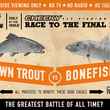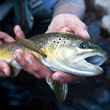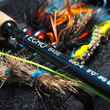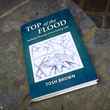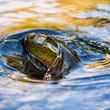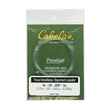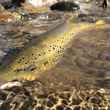I don’t consider myself a good dry fly fisherman. Not in the least. In fact, I spend most of my time nymphing, fishing wet flies and underperforming with streamers. Part of the reason my dry fly skills aren’t what I’d like them to be is a result of the fact that I don’t get as much time on the water as I’d like during the spring and summer hatches. Despite Pennsylvania being a wonderful trout fishing state, most of the state’s best fishing is over three hours from my doorstep, and the streams and rivers that exist in between don’t present what you’d call either clockwork or blanket hatches, so hitting them with any regularity takes a considerable bit of effort.
When I do find myself on the water during a good hatch, I do okay. I’m not splashing flies down on the surface and spooking entire pools. But, I’ll easily get outfished by the dry fly aficionado that doesn’t so much as carry split shot or even have a woolly bugger in his box and who spends all year casting exclusively dries, perfecting his reach cast. And that’s fine with me.
Given the above, I’m not typically eager to criticize other fishermen’s tactics for fishing bugs on or near the surface. Yet, whether the other fishermen I observe are obvious veterans or relative beginners, I’m repeatedly struck by the one-dimensional approach the vast majority of those fishermen take when fishing their flies and hoping to entice a trout to rise from where it is holding and snatch up their offering.



